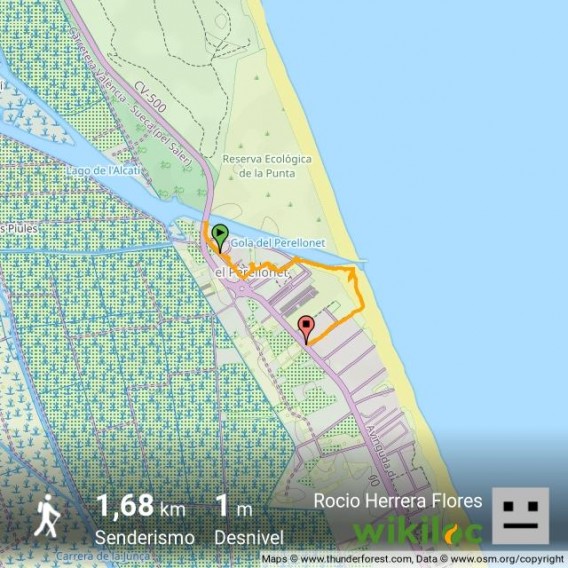El Perellonet. The gola, the elver fishing, the monot, the elver fishermen’s houses, the pyramids on the beach, the Yatemar and Els Marins hotel.
Hosted by Guillem Cervera
The settlements known as El Perellonet has its origins in the gola of the same name, built in 1903. Next to it, the house was built for the person in charge and guard of the floodgates, where the Blayet family settled, to the present, which He runs a very famous restaurant in the town. The construction of the Nazareth-Oliva road in 1920 also contributed significantly to the formation of the settlements. In the 1930s, the first elver fishermen began to settle in very precarious huts, seeking proximity to the elver nurseries. These barracks would later be replaced on the mainland by the popular fishermen’s houses characterized by their roof in the shape of an inverted catenary, which can be seen in what is known as the Marques de Valterra Housing Group, in honor of the man who was its promoter.

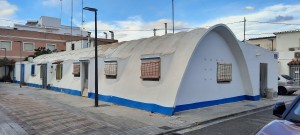
A summary of the evolution of El Perellonet, how the settlements was formed and the intense transfer of knowledge that is behind it ―magnificently represented in the monot (the gear used for elver fishing)― can be seen here.
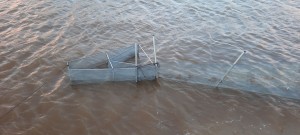
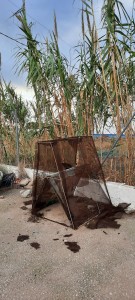
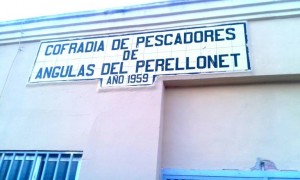
Above is the monot used for elver fishing, and one semi-abandoned next to the Fishermen’s Guild, and we say semi-abandoned because a few days later it was no longer there.
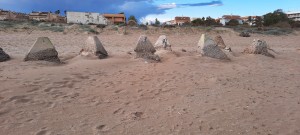
The concrete pyramids of El Perellonet beach could be a magnificent example of the contradictions and complexities of territorial management. They were placed there in the sixties of the last century to help retain and maintain the sand on the beach, which was swallowed up by the sea when there was a storm, like a breakwater. During this time they have had the opportunity to develop this function, moreover, they have served as an anchor point for dunes that grew over time. Although not completely, as evidenced by the fact that, when there have been big storms, as happened, one of the last times, in the winter of 2017, the sea has carried away part of the sand, leaving a visible large number of the pyramids that were hidden.
The objective pursued with this action of construction of a kind of breakwater (although with a striking design due to the pyramid-shaped concrete blocks), raises doubts that at that time (or the author of the project, or whoever commissioned it) if had knowledge of how coastal dynamics work and that the first factor of beach erosion, discounting marine storms, is the destruction of the dune ridge that serves to fix the beach. And there are doubts in this regard since, instead of protecting the dune range, this type of breakwater was built with magnificent pyramid-shaped cement blocks. At that time, the engineering of roads, canals and ports solved problems like this: by adding a lot of cement. Then would come the channeling of ravines with concrete. Currently the dune ridge is being protected, and the beach is holding up well, much better than those beaches where the dune ridge was destroyed when it was decided advance the building line to the first towels for visitors lying in the sun. But it is worth remembering that the decision to protect the dune range has not been an urban planning decision, nor one of territorial planning, but is a consequence of the declaration of the Albufera Natural Park, in 1986. Let’s stay with the image of those cement pyramids that have contributed so much to outlining a landscape with its own personality loaded with symbolism for El Perelló beach.
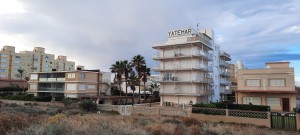
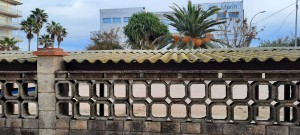
The Yatemar and Els Marín hotels, now out of use, are the last vestiges of a time in which El Perellonet was the first weekend and holiday destination for an emerging Valencian middle class. It is surprising how well many of the construction elements that characterize these two hotels have been preserved, such as, for example, this latticework on the closing wall of the parking lot of the Els Marín hotel.
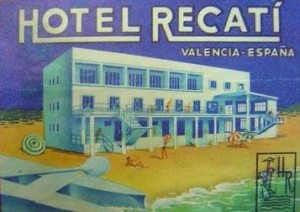
The first of these tourist establishments was the Recatí Hotel, a wonder of Modern Architecture, it was built in 1955 and demolished a few decades later without pain or glory, to be replaced by a larger building. But the attraction for that landscape, which in many aspects is still alive and current, remains unchanged, as evidenced by the recent edition of a magnificent tribute to that concept. It can be seen here: https://flatmagazine.es/arquitectura/la-playa-del-recati/
In some way, this landscape of modern hotels, with those exterior stairs through which we can imagine tourists descending in swimsuits with a casual attitude, with a bar and nightlife atmosphere (which does not exclude the television screen and sports broadcasts at the end of week), where to stop to have an adventure, or to forget the adventure that could not be, is part of the other side of the El Perellonet personality, a less heroic one, with a “Leaving Las Vegas” touch, an atmosphere like the one that implied the appearance of news in the local newspaper like the one attached.
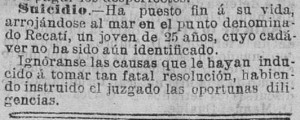
Suicide.- A 25-year-old young man has ended his life by throwing himself into the sea at the point called Recatí, whose body has not yet been identified.
The causes that led him to make such a fatal decision are unknown, the court having taken the appropriate steps.
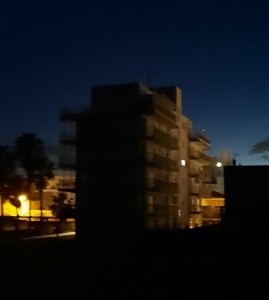
During the visit to El Perellonet in the first edition of the Entropic Landscape Workshop it was nighttime. In the image the Yatemar hotel with a light on. It seems that it is not so empty. A night photograph of El Perellonet beach is something very appropriate for the meaning of this place, according to the indications that it has hidden stories, of which they find their moment of realization at night.
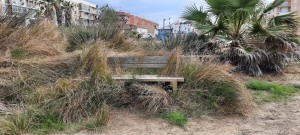
On this bench in front of El Perellonet beach, no one has sat down to look at the horizon for a long time.
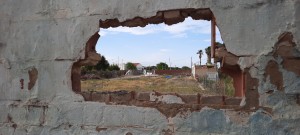
El Perellonet is full of places that are the pleasure of the entropologist.


